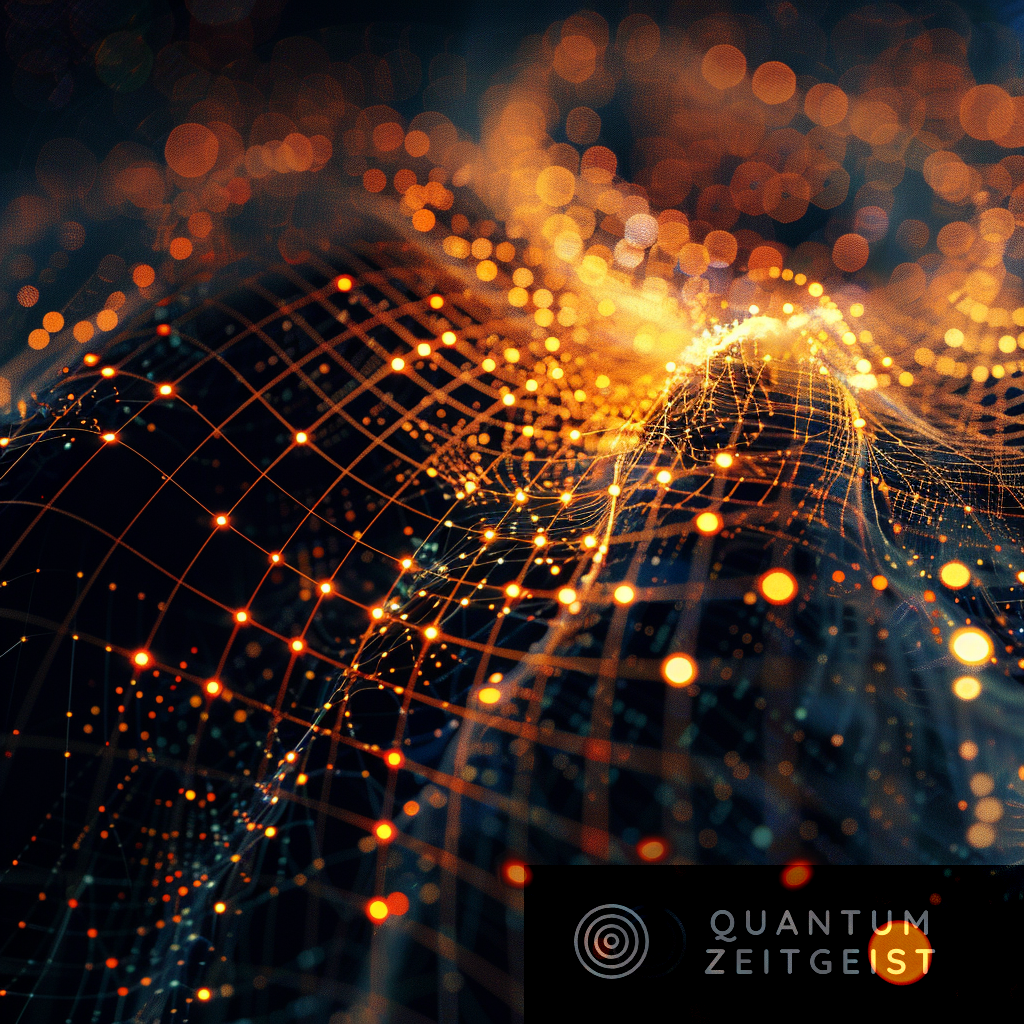Quantum many-body dynamics, a complex field studying the behavior of quantum systems with many degrees of freedom, could be significantly advanced by quantum computers. These computers are capable of handling the time evolution of quantum states, a key aspect of quantum many-body dynamics. Quantum algorithms, such as the qubit-efficient mapping on a lattice, can calculate response functions crucial for describing reactions. Hamiltonian mapping, ground-state preparation, and noise mitigation are all critical aspects of these algorithms. This research could lead to significant advancements in nuclear physics and our understanding of nuclear reactions.
What is Quantum Many-Body Dynamics and Why is it Challenging?
Quantum many-body dynamics is a field of study that focuses on the behavior of quantum systems with many degrees of freedom. This is a complex area of study due to the sheer number of variables involved, making it extremely challenging to simulate on classical computers. However, quantum computers, which are designed to efficiently perform unitary transformations, are naturally suited for this task. This is because quantum computers can handle the time evolution of quantum states, a key aspect of quantum many-body dynamics.
The study of quantum many-body dynamics is not just an academic exercise. It has practical applications in various fields, including nuclear physics. For instance, quantum computers could be used to calculate reaction cross sections, which are currently inaccessible with classical computers, even for relatively light nuclei. This could potentially lead to significant advancements in our understanding of nuclear reactions and the fundamental forces that govern them.
How Can Quantum Algorithms Help?
Quantum algorithms can be used to calculate response functions, which are crucial for describing different reactions governed by linear response. One such algorithm is the qubit-efficient mapping on a lattice, which can be efficiently performed using momentum-space basis states. This algorithm has been studied in detail, with a focus on its advantages and disadvantages. The analysis has been done using a nuclear two-body system and a typical response function relevant for electron scattering as an example.
The qubit-efficient mapping algorithm has several key steps. These include ground-state preparation, controlled time evolution, and the required measurements. Each of these steps has been examined in detail, including the circuit depth and the hardware noise level required to interpret the signal. The results of this analysis suggest that the qubit-efficient mapping algorithm has significant potential for describing quantum many-body dynamics.
What is the Role of Hamiltonian Mapping?
Hamiltonian mapping is a crucial aspect of quantum algorithms. It involves mapping Hamiltonians to qubits, which is a necessary step for describing many-body systems on a quantum computer. Various methods for Hamiltonian mapping have been investigated, considering the trade-offs with respect to the number of required qubits and the number of Pauli strings in the Hamiltonian or circuit depth for different algorithms.
One such method is the Jordan-Wigner mapping. This method is relevant for fermionic Hamiltonian in second quantization. However, the Jordan-Wigner mapping involves a large number of qubits, scaling as the lattice volume. This makes it less efficient for small numbers of particles. As a result, a qubit-efficient momentum-space mapping has been suggested as a more efficient alternative.
How is Ground-State Preparation Achieved?
Ground-state preparation is a necessary step for the description of many-body systems on a quantum computer. Various methods for ground-state preparation have been developed, including variational algorithms, adiabatic evolution, and projection-based methods. Additionally, algorithms for initialization to a known state have also been developed.
In the context of the qubit-efficient mapping algorithm, different approaches for ground-state preparation have been considered. These include an energy-filter method and a new approach for state initialization assuming the ground state is known. For the latter, the gate depth scales polynomially with the number of qubits and inversely with the error associated with the resulting state compared to the desired state.
What are the Implications of Noise on Quantum Algorithms?
Noise is a significant factor that can affect the performance of quantum algorithms. It is therefore crucial to understand the impact of noise on the qubit-efficient mapping algorithm. This involves analyzing the required circuit depth and the hardware noise level required to interpret the signal.
The analysis suggests that while noise can have an impact on the performance of the algorithm, it is possible to mitigate this impact through careful design and optimization of the quantum circuits. This includes using both first-order and second-order Trotter approximation for time evolution. The results of this analysis provide valuable insights into the practical implementation of quantum algorithms for describing quantum many-body dynamics.
Publication details: “Reaction dynamics with qubit-efficient momentum-space mapping”
Publication Date: 2024-03-29
Authors: R. Weiss, Alessandro Baroni, J. Carlson, Ionel Stetcu, et al.
Source: arXiv (Cornell University)
DOI: https://doi.org/10.48550/arxiv.2404.00202

